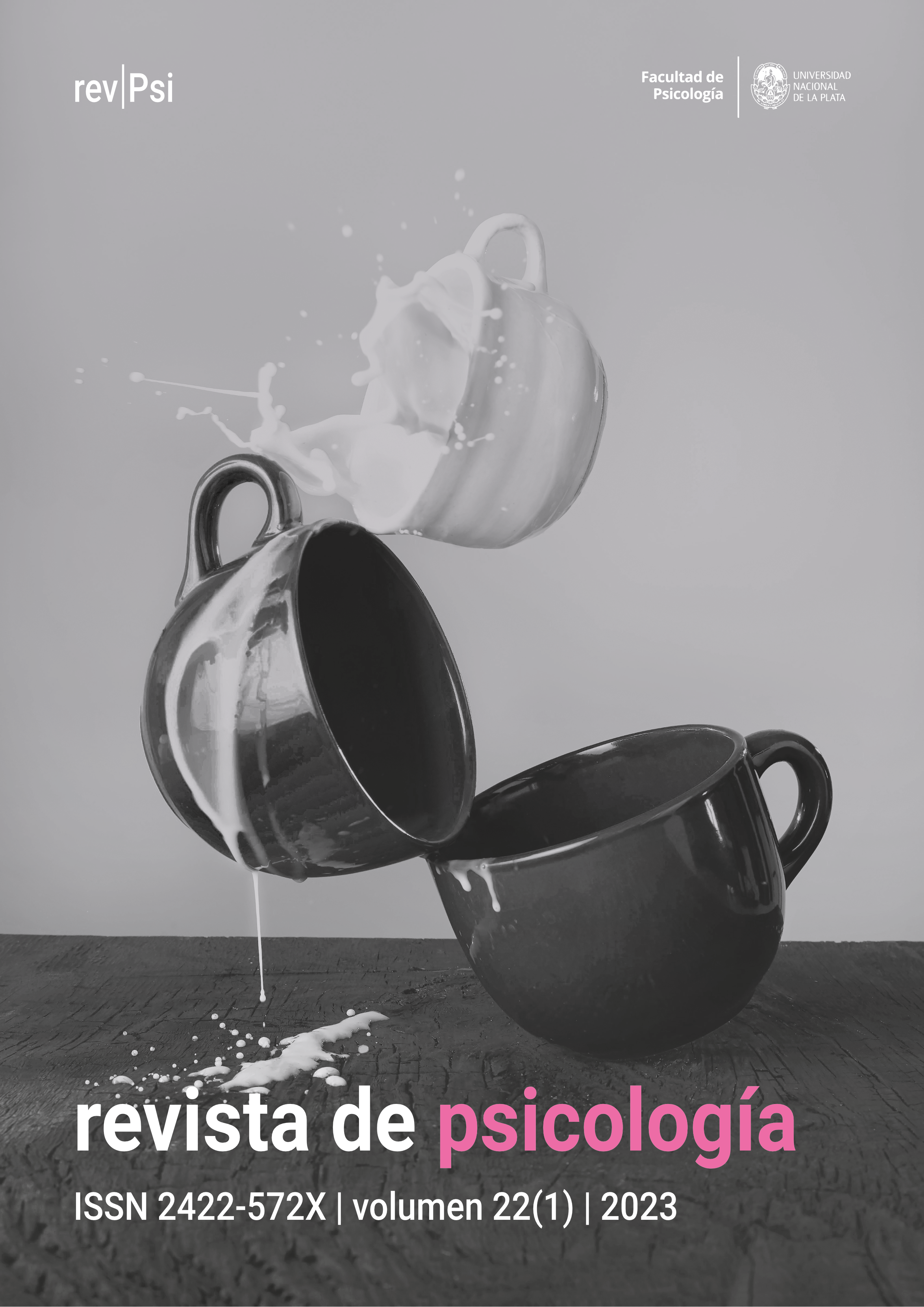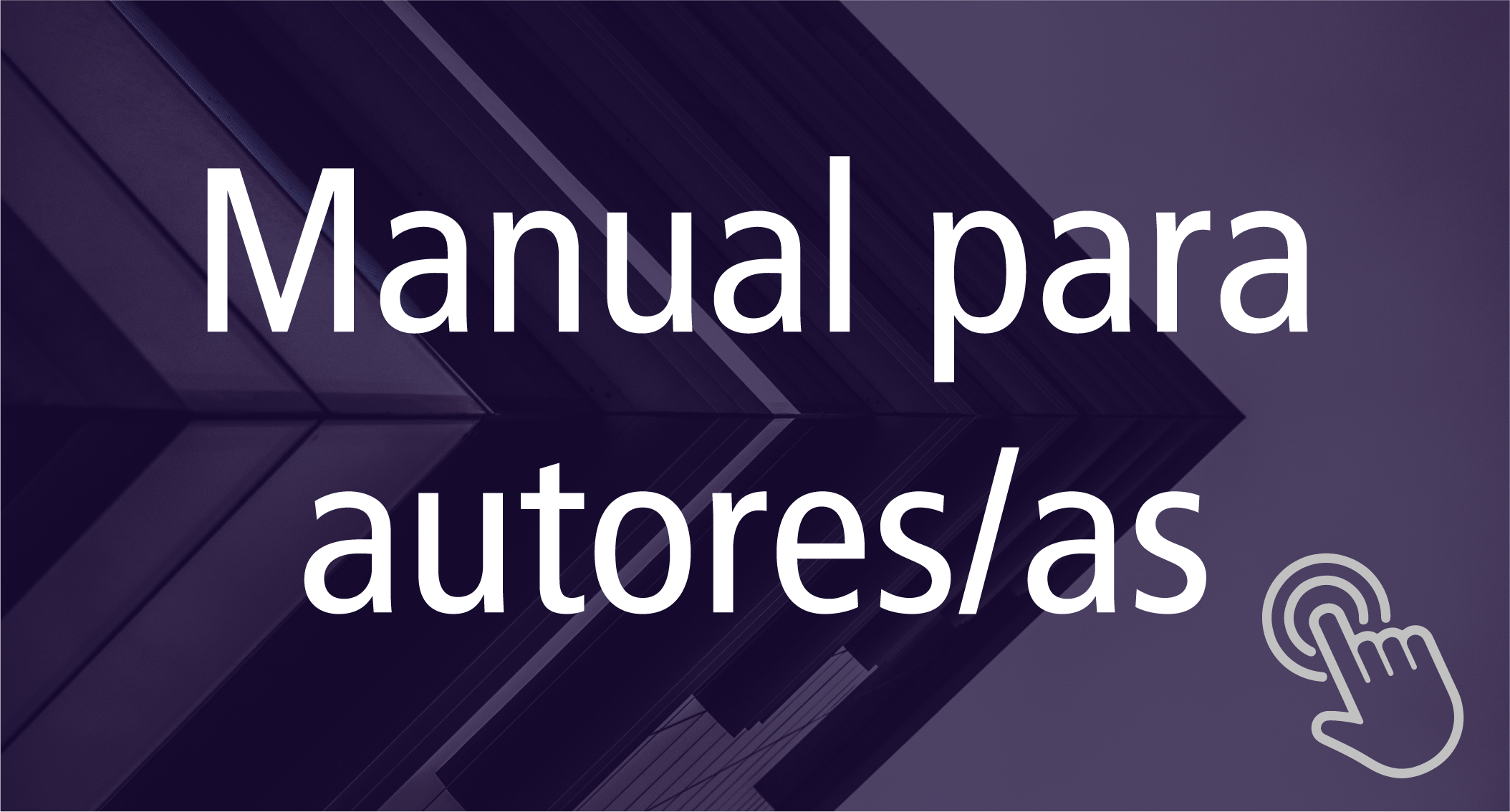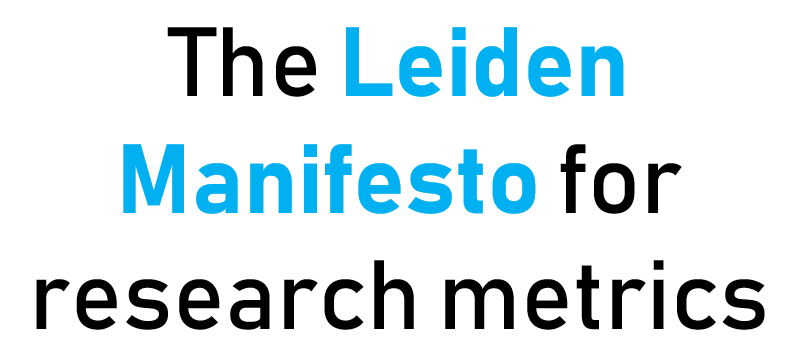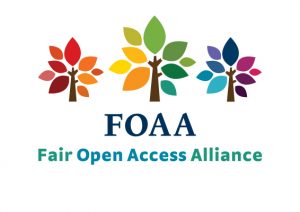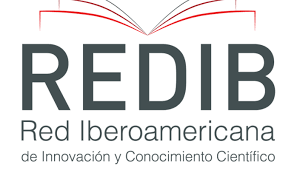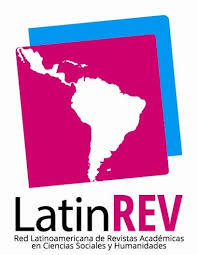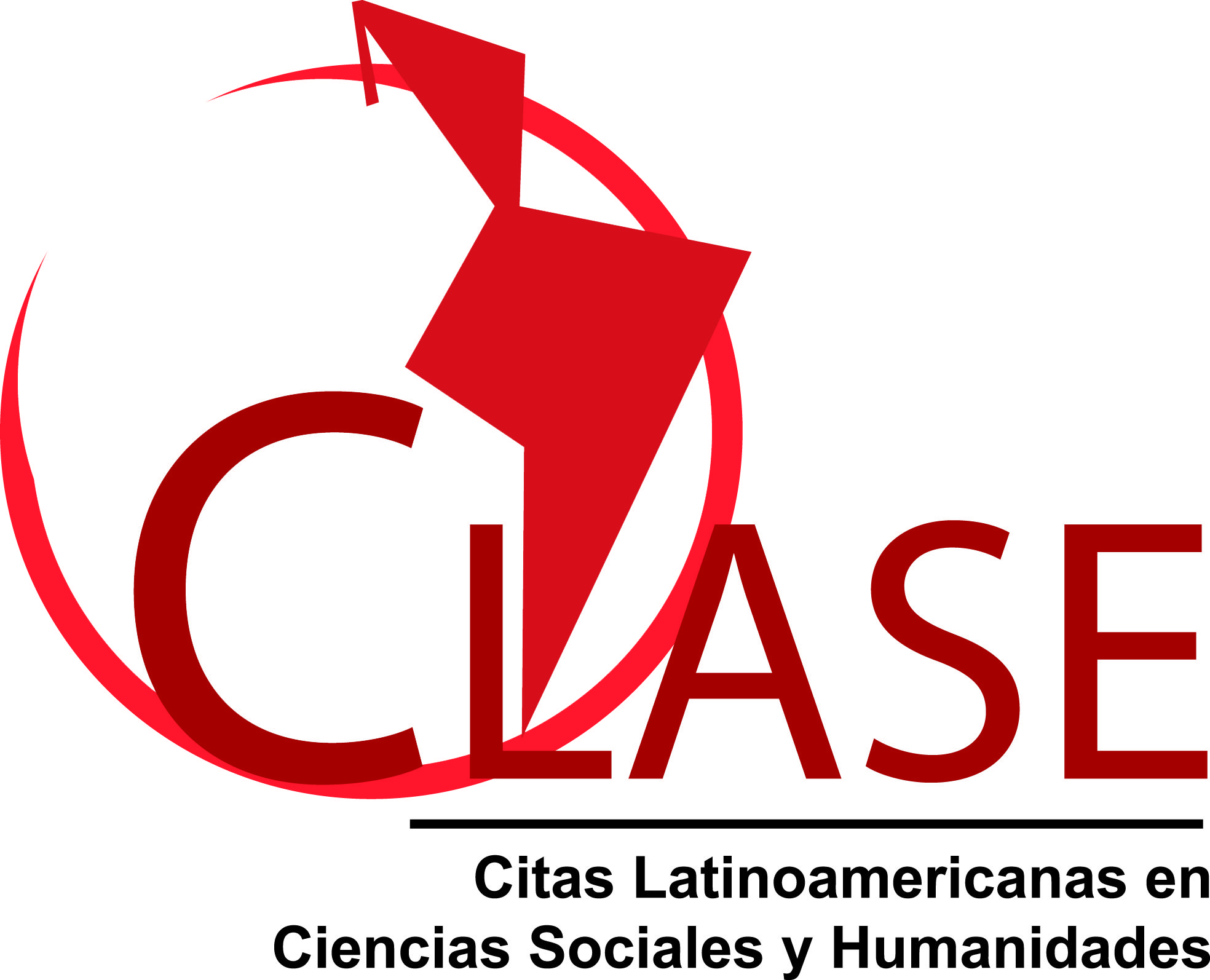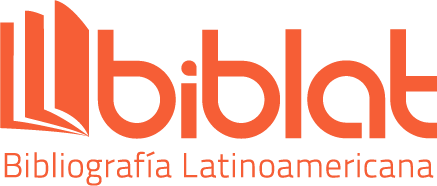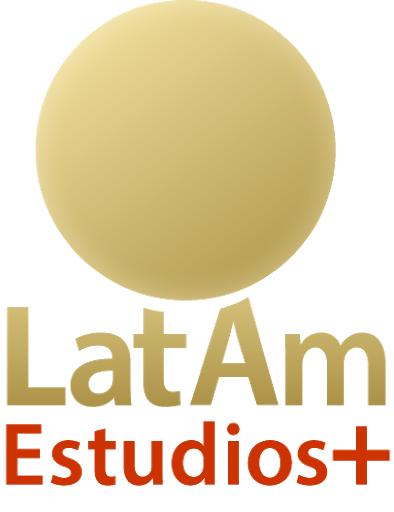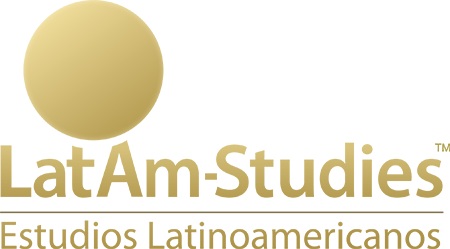Multimodalidade no desenvolvimento comunicativo inicial
DOI:
https://doi.org/10.24215/2422572Xe087Palavras-chave:
multimodalidade, comunicação pré-linguística, interação social, desenvolvimento da linguagemResumo
Apresentamos uma revisão narrativa da abordagem multimodal no estudo do desenvolvimento comunicativo precoce. Os antecedentes tradicionais neste campo são examinados e a necessidade de reexaminar a dinâmica das interações "pré-intencionais" é destacada, pois neles é possível observar como diferentes recursos semióticos que compõem a estrutura multimodal da comunicação pré-linguística são articulados desde cedo. Três reviravoltas conceituais são propostas para dar conta desta estrutura: a reconsideração do caráter triádico das primeiras interações; a função comunicativa e o caráter cultural dos objetos e a resignificação dos gestos ostensivos como sinais em seu próprio direito. Os elementos considerados como preditores do surgimento da linguagem são analisados. Conclui-se que é necessário adotar uma visão mais ampla, que revaloriza aspectos geralmente negligenciados no estudo do desenvolvimento comunicativo precoce e nos permite formular novas questões sobre suas ligações com o desenvolvimento lingüístico inicial.
Referências
Alessandroni, N., Moreno-Núñez, A., Rodríguez, C., y Del Olmo, M. J. (2020). Musical dynamics in early triadic interactions: A case study. Psychological Research, 84(6), 1555-1571. https://doi.org/10.1007/s00426-019-01168-4
Alibali, M. W., Kita, S., y Young, A. J. (2000). Gesture and the process of speech production: We think, therefore we gesture. Language and Cognitive Processes, 15(6), 593-613. https://doi.org/10.1080/016909600750040571
Austin, J. L. (1962/1982). Cómo hacer cosas con palabras. Palabras y acciones (G. R. Carrió y E. A. Rabossi, trads.). Paidós.
Basilio Seyler, M. (2014). Los signos preverbales como herramientas de pensamiento: el origen social de la autorregulación cognitiva en niños de 14 a 18 meses de edad. Tesis doctoral inédita. Universidad Autónoma de Madrid. http://hdl.handle.net/10486/664104
Bates, E., Beningni, L., Bretherton, I., Camaioni, L., y Volterra, V. (1979). The emergence of symbols: Cognition and communication in infancy. Academic Press.
Bates, E., Camaioni, L., y Volterra, V. (1975). The acquisition of performatives prior to speech. Merrill-Palmer Quarterly, 21, 205 – 224. http://www.jstor.org/stable/23084619
Blake, J., Vitale, G., Osborne, P., y Olshansky, E. (2005). A cross-cultural comparison of communicative gestures in human infants during the transition to language. Gesture, 5(1-2), 201-217. https://doi.org/10.1075/gest.5.1.14bla
Butcher, C., y Goldin-Meadow, S. (2000). Gesture and the transition from one- to two-word speech: When hand and mouth come together. En D. McNeill (Ed.), Language and gesture (pp. 235–258). Cambridge University Press.
Butterworth, G. (2003). Pointing is the royal road to language for babies. En S. Kita (Ed.), Pointing: Where language, culture, and cognition meet (pp. 9 – 33). Erlbaum.
Butterworth, G., y Morissette, P. (1996). Onset of pointing and the acquisition of language in infancy. Journal of Reproductive and Infant Psychology, 14(3), 219-231. https://doi.org/10.1080/02646839608404519
Camaioni, l., Caselli, M. C., Longobardi, E. y Volterra, V. (1991). A parent report instrument for early language assessment. First Language, 11(33), 345-358. https://doi.org/10.1177/014272379101103303
Cameron‐Faulkner, T., Theakston, A., Lieven, E., y Tomasello, M. (2015). The relationship between infant holdout and gives and pointing. Infancy, 20(5), 576-586. https://doi.org/10.1111/infa.12085
Capirci, O., Contaldo, A., Caselli, M. C., y Volterra, V. (2005). From action to language through gesture: A longitudinal perspective. Gesture, 5, 155-177. https://doi.org/10.1075/gest.5.1.12cap
Capirci, O., y Volterra, V. (2008). Gesture and speech: The emergence and development of a strong and changing partnership. Gesture, 8(1), 22-44. https://doi.org/10.1075/gest.8.1.04cap
Carpendale, J. I. M., y Carpendale, A. B. (2010) The development of pointing: From personal directedness to interpersonal direction. Human Development, 53(3), 110–126. https://doi.org/10.1159/000315168
Caselli, M. C. (1990). Communicative gesture and first words. En V. Volterra y C. J. Erting (Eds.), From gesture to language in hearing and deaf children (pp. 56-67). Springer Verlag.
Cyrulnik, B. (2002). De la conscience émergente à la conscience partagée. En F. Rastier y S. Bouquet (Eds.), Une introduction aux sciences de la culture (pp.81–90). PUF.
De Ruiter, J. P. (2000). The production of gesture and speech. En D. McNeill (Ed.), Language and gesture (pp. 284-311). Cambridge University Press.
De Schumer, L., De Groote, I., Striano, T., Stahl, D., y Roeyers, H. (2011). Dyadic and triadic skills in preterm and fullterm infants: A longitudinal study in the first year. Infant Behavior and Development, 34(1), 179-188. https://doi.org/10.1016/j.infbeh.2010.12.007
Dimitrova, N., y Moro, C. (2013). Common ground on object use associates with caregivers’ gestures. Infant Behavior and Development, 36, 618–626. https://doi.org/10.1016/j.infbeh.2013.06.006
Donnellan, E., Bannard, C., McGillion, M. L., Slocombe, K. E., y Matthews, D. (2020). Infants’ intentionally communicative vocalizations elicit responses from caregivers and are the best predictors of the transition to language: A longitudinal investigation of infants’ vocalizations, gestures and word production. Developmental Science, 23(1), e12843. http://doi.or/ 10.1111/desc.12843
Esteve-Gibert, N., y Prieto, P. (2014). Infants temporally coordinate gesture–speech combinations before they produce their first words. Speech Communication, 57, 301–316. https://doi.org/10.1016/j.specom.2013.06.006
Fasolo, M., y D’Odorico, L. (2012). Gesture-plus-word combinations, transitional forms, and language development. Gesture, 12, 1–15. https://doi.org/10.1075/gest.12.1.01fas
Guevara, I., Moreno-Llanos, I., y Rodríguez, C. (2020). The emergence of gestures in the first year of life in the Infant School classroom. European Journal of Psychology of Education, 35, 265–287. https://doi.org/10.1007/s10212-019-00444-6
Igualada, A., Bosch, L., y Prieto, P. (2015). Language development at 18 months is related to multimodal communicative strategies at 12 months. Infant Behavior and Development, 39, 42–52. https://doi.org/10.1016/j.infbeh.2015.02.004
Inhelder, B. (1992). Le cheminement des découvertes de l’enfant. (recherche sur les microgenèses cognitives). Delachaux y Niestle.
Iverson, J. (2010). Developing language in a developing body: The relationship between motor development and language development Journal of Child Language, 37(2), 229-261. https://doi.org/10.1017/S0305000909990432
Karousou, A. (2003). Análisis de las vocalizaciones tempranas: Su patrón evolutivo y su función determinante en la emergencia de la palabra. Tesis doctoral inédita. Universidad Complutense de Madrid.
Keller, H., Otto, H., Lamm, B., Yovsi, R. D., y Kärtner, J. (2008). The timing of verbal/vocal communications between mothers and their infants: A longitudinal cross-cultural comparison. Infant Behavior and Development, 31(2), 217-226. https://doi.org/10.1016/j.infbeh.2007.10.001
Kendon, A. (1993). Human gesture. En K. R. Gibson, y T. Ingold (Eds.), Tools, language and cognition in human evolution (pp. 43-62). Cambridge University Press.
Liebal, K., Behne, T., Carpenter, M., y Tomasello, M. (2007). Infants use shared experience to interpret pointing gestures. Developmental Science, 12(2), 264-271. https://doi.org/10.1111/j.1467-7687.2008.00758.x
Liszkowski, U. (2005). Human twelve-month-olds point co-operatively to share interest with and provide information for a communicative partner. Gesture, 5, 135-154. https://doi.org/10.1075/gest.5.1.11lis
Liszkowski, U. (2006). Infant pointing at twelve months: Communicative goals, motives, and social-cognitive abilities. En N. Enfield y S. Levinson (Eds.), The roots of human sociality: Culture, cognition, and interaction (pp. 153 – 178). Berg.
Liszkowski, U., Carpenter, M., y Tomasello, M. (2007). Reference and attitude in infant pointing. Journal of Child Language, 34, 1-20.
López-Ornat, S., Gallego, C., Gallo, P., Karousou, A., Mariscal, S., y Martínez, M. (2005). Inventarios de desarrollo comunicativo MacArthur. TEA Ediciones.
Malloch, S., y Trevarthen, C. (2009). Communicative musicality. Oxford University Press.
McNeill, D. (1992). Hand and mind: What gestures reveal about thought. University of Chicago Press.
Moore, C. (1996). Theories of mind in infancy. British Journal of Developmental Psychology, 14, 19-40. https://doi.org/10.1111/j.2044-835X.1996.tb00691.x
Moore, C., y D’Entremont, B. (2001). Developmental changes in pointing as a function of parent’s attentional focus. Journal of Cognition and Development, 2, 109-129. https://doi.org/10.1207/S15327647JCD0202_1
Moreno-Núñez, A. (2014). Ostensive gestures in triadic interactions: From rhythmic ostensive gestures of the adult to children’s gestures at the end of the first year of life. Tesis doctoral inédita. Universidad Autónoma de Madrid. https://repositorio.uam.es/bitstream/handle/10486/664115/moreno_nunez_ana.pdf?sequence=1
Moreno-Núñez, A., Rodríguez, C. y Del Olmo, M.J. (2015). The rhythmic, sonorous and melodic components of adult-child-object interactions between 2 and 6 months old. Integr. Psych. Behav., 49, 737–756. https://doi.org/10.1007/s12124-015-9298-2
Moreno-Núñez, A., Rodríguez, C., y Del Olmo, M. J. (2017). Rhythmic ostensive gestures: How adults facilitate infants’ entrance into early triadic interactions. Infant Behavior and Development, 49, 168-181. https://doi.org/10.1016/j.infbeh.2017.09.003
Moreno-Núñez, A., Rodriguez, C., y Miranda-Zapata, E. (2020). Getting away from the point: the emergence of ostensive gestures and their functions. Journal of Child Language, 47(3), 556-578. https://doi.org/10.1017/S0305000919000606
Moro, C., Rodríguez, C. (2005). L'objet et la construction de son usage chez le bébé: une approche sémiotique du développement préverbal. Peter Lang.
Murillo, E., y Belinchón, M. (2012). Gestural–vocal coordination: Longitudinal changes and predictive value on early lexical development. Gesture, 12, 16–39. https://doi.org/10.1075/gest.12.1.02mur
Murillo, E., y Belinchón, M. (2013). Patrones comunicativos multimodales en la transición a las primeras palabras: Cambios en la coordinación de gestos y vocalizaciones. Infancia y Aprendizaje, 36, 473–487. https://doi.org/10.1174/021037013808200258
Murillo, E., Ortega, C., Otones, A., Rujas, I., y Casla, M. (2018). Changes in the Synchrony of Multimodal Communication in Early Language Development. Journal of Speech Language and Hearing Research, 61(1), 1-11. https://doi.org/10.1044/2018_jslhr-l-17-0402
Nomikou, I., Leonardi, G., Rohlfing, K. J., y Rączaszek‐Leonardi, J. (2016). Constructing interaction: the development of gaze dynamics. Infant and Child Development, 25(3), 277-295. https://doi.org/10.1002/icd.1975
O’Madagain, C., Kachel, G., y Strickland, B. (2019). The origin of pointing: Evidence for the touch hypothesis. Science Advances, 5(7), eaav2558. http://doi.or/10.1126/sciadv.aav2558
Overton, W. F., y Molenaar, P. C. (2015). Concepts, theory, and method in developmental science: A view of the issues. En R.M. Lerner (Eds.), Handbook of child psychology and developmental science (pp. 1-8) Wiley.
Palacios, P., y Rodríguez, C. (2014). The development of symbolic uses of objects in infants in a triadic context: A pragmatic and semiotic perspective. Infant and Child Development, 24(1), 23-43. http://dx.doi.org/10.1002/icd.1873
Peirce, C. S. (1868 -1987) Obra lógico-semiótica (R. Alcalde y M. Prelooker, trads.). Taurus.
Piaget, J. (1936/1969). El desarrollo de la inteligencia en el niño (L. Fernández Cancela, trad.) Aguilar.
Piaget, J. (1950/1985). La toma de conciencia (L. Fernández Alfonso, trad.) Ediciones Morata.
Reddy, V. (2008). How infants know minds. Harvard University Press.
Rodríguez, C. (2006). Del ritmo al símbolo. Los signos en el nacimiento de la inteligencia. Horsori.
Rodríguez, C., Basilio, M., Cárdenas, K., Cavalcante, S., Moreno-Núńez, A., Palacios, P., y Yuste, N. (2018). Object pragmatics: Culture and communication - the bases for early cognitive development. En A. Rosa y J. Valsiner (Eds.), The Cambridge handbook of sociocultural psychology (pp. 223–244). Cambridge University Press.
Rodríguez, C., Benassi, J., Estrada, L., y Alessandroni, N. (2017). Early social interactions with people and objects. En A. Slater y G. Bremner (Eds.), An introduction to developmental psychology (3ra edn., pp. 213–258). Hoboken/West Sussex.
Rodríguez, C., Moreno-Núñez, A., Basilio, M., y Sosa, N. (2015). Ostensive gestures come first: their role in the beginning of shared reference. Cognitive Development, 36, 142-149. https://doi.org/10.1016/j.cogdev.2015.09.005
Rodríguez, C., y Moro, C. (1999). El mágico número tres. Cuando los niños aún no hablan. Paidós.
Rodríguez, F. (2012). El hermano menor de la palabra. Panorámica de los estudios sobre el gesto. Psiencia. Revista Latinoamericana de Ciencia Psicológica, 4(1), 43-56. http://dx.doi.org/10.5872/psiencia.v4i1.88
Romero, A., Etxebarria, A., de Pablo, I., y Romero, A. (2017). Interrelación entre gestos y vocalizaciones en funciones comunicativas tempranas: Evidencias desde la lengua. Revista Signos, 50(93), 96–123. http://dx.doi.org/10.4067/S0718-09342017000100005
Rossmanith, N., Costall, A., Reichelt, A. F., López, B., y Reddy, V. (2014). Jointly structuring triadic spaces of meaning and action: book sharing from 3 months on. Frontiers in Psychology, 5, 1390. https://doi.org/10.3389/fpsyg.2014.01390
Rowe, M. L., y Goldin-Meadow, S. (2009). Differences in early gesture explain SES disparities in child vocabulary size at school entry. Science, 323(5916), 951-953. https://doi.org/10.1126/science.1167025
Searle, J. R. (1969/1994). Actos de habla (L.M Valdés Villanueva, trad.). Cátedra.
Smith, L. B., y Thelen, E. (2003). Development as a dynamic system. Trends in Cognitive Sciences, 7(8), 343-348. https://doi.org/10.1016/S1364-6613(03)00156-6
Tomasello, M. (1999). The human adaptation for culture. Annual Review of Anthropology, 28(1), 509-529. https://doi.org/10.1146/annurev.anthro.28.1.509
Tomasello, M. (2007). Los orígenes culturales de la cognición humana (A. Negrotto, trad.) Amorrortu.
Tomasello, M. (2020, 28 de diciembre). Becoming human: a theory of ontogeny [presentación en congreso]. IV Congreso Latinoamericano para el Avance de la Ciencia Psicológica. Disponible en https://www.youtube.com/watch?v=o8PbgEnEtQU&t=158s
Tomasello, M., y Carpenter, M. (2007). Shared intentionality. Developmental Science, 10(1), 121-125. https://doi.org/10.1111/j.1467-7687.2007.00573.x
Tomasello, M., Carpenter, M., Call, J., Behne, T. y Moll, H. (2005). Understanding and sharing intentions: The origins of cultural cognition. Behavioral and Brain Sciences, 28, 675-735. https://doi.org/10.1017/S0140525X05000129
Tomasello, M., Carpenter, M. y Liszkowski, U. (2007). A new look at infant pointing. Child Development, 78(3), 705-722. https://doi.org/10.1111/j.1467-8624.2007.01025.x
Trevarthen, C. (1999) Musicality and the intrinsic motive pulse: evidence from human psychobiology and infant communication. Musicae Scientiae, 3(1), 155-215. https://doi.org/10.1177/10298649000030S109
Trevarthen, C. (2003). Conversations with a two-month-old. Whurr Publishers.
Vigliocco, G., Perniss, P. y Vinson, D. (2014). Language as a multimodal phenomenon: Implications for language learning, processing and evolution. Philosophical Transactions of the Royal Society B: Biological Sciences, 369(1651), 20130292. https://doi.org/10.1098/rstb.2013.0292
Vihman, M. M., Macken, M. A., Simmons, H., y Miller, J. (1985). From babbling to speech: A reassessment of the continuity issue. Language, 61(2), 397-445. https://doi.org/10.2307/414151
Vygotsky, L. S. (1978/2000). El desarrollo de los procesos psicológicos superiores (S. Furió, trad.). Crítica.
Wu, Z., y Gros-Louis, J. (2014). Infants’ prelinguistic communicative acts and maternal responses: Relations to linguistic development. First Language, 34, 72–90. https://doi.org/10.1177/0142723714521925
Zelazo, P. D., y Müller, U. (2004). Executive function in typical and atypical development. En U. Goswami (Ed.), Blackwell handbook of childhood cognitive development (pp. 445–469). Blackwell
Downloads
Publicado
Edição
Seção
Licença
Copyright (c) 2021 Ana Laguens, Maira Querejeta, Mariela Resches

Este trabalho está licenciado sob uma licença Creative Commons Attribution 4.0 International License.

Os autores que publicam neste periódico aceitam as seguintes condições:
- Autores mantém os direitos autorais e atribuir o direito de primeira publicação para a revista, com a obra registrada sob uma Licença de atribuição Creative Commons (CC-BY) , que permite que terceiros usem o que é publicado sempre que mencionarem a autoria do trabalho e a primeira publicação desta revista.
- Os autores podem fazer outros acordos contratuais independentes e adicionais para a distribuição não-exclusiva do artigo publicado na revista ESTA (por exemplo, incluí-lo em um repositório institucional ou publicá-lo em um livro), enquanto eles indicou claramente que o trabalho foi publicado pela primeira vez nesta revista.
- Autores são permitidos e encorajados a publicar seus trabalhos na Internet (por exemplo, em páginas institucionais ou individuais) antes e durante o processo de revisão e publicação, pois pode gerar alterações produtivas e maior e mais rápida difusão do trabalho publicado (ver The Effect of Open Access).

